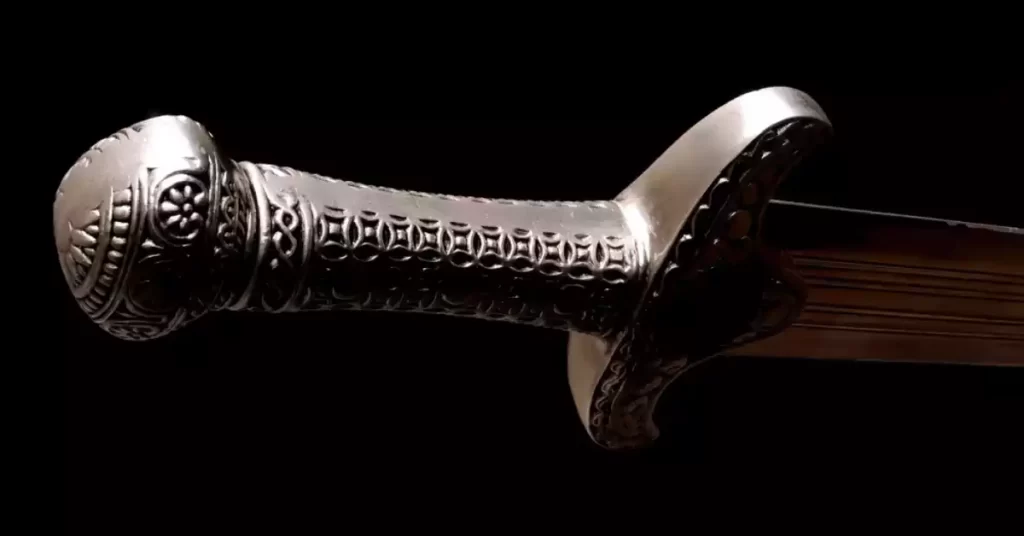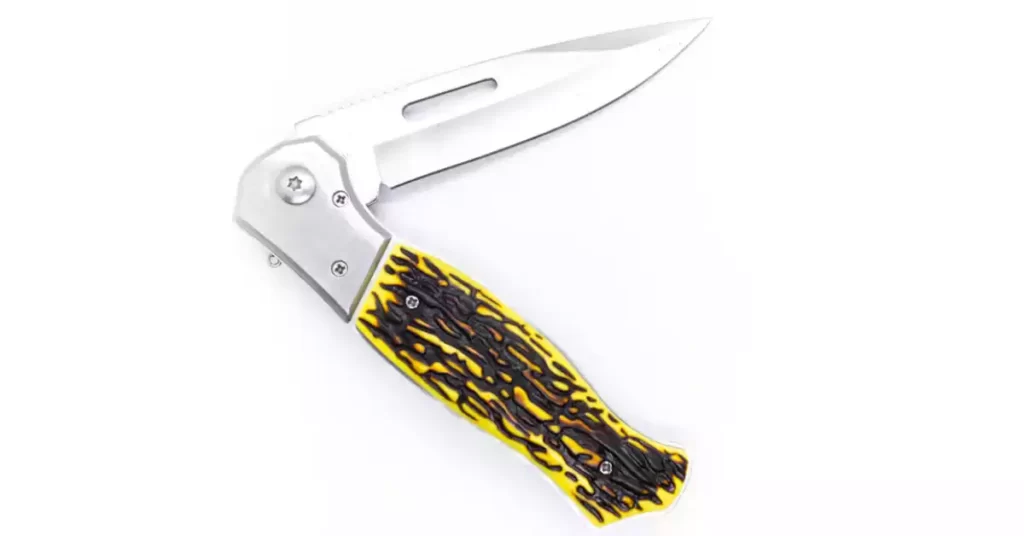Knives, the quintessential tool of mankind, have undergone considerable evolution over centuries. One such element that has stood the test of time is the ‘pommel.’ As obscure as it may sound, a pommel holds significance in a knife’s design that extends far beyond mere aesthetics. It contributes to a knife’s balance, control, and overall functionality, making it a critical component in a knife’s anatomy.
A pommel refers to the knob or enlarged part at the end of the knife handle. Its primary function is to balance the knife and provide a better grip. Different types of pommels not only add to the aesthetic appeal of knives but also play a significant role in their handling and application.
Knife pommels are available in varied designs and materials. From simple flat ones to shaped and decorative ones, each pommel type brings a unique character and utility to the knife. Similarly, the choice of pommel material, be it steel, brass, or modern-day plastic and rubber, affects a knife’s performance and usage.
History of Knife Pommels
Early Use and Evolution
The history of knife pommels is as riveting as the history of knives themselves. The early knife pommels were rudimentary and utilitarian, primarily serving to balance the blade and handle. Over time, they evolved, bearing testimony to the advancing craftsmanship and changing use of knives.
Influence on Knife Design
The evolution of pommels has significantly influenced knife design. With changes in knife use from hunting and survival to everyday carry (EDC) and ornamental purposes, pommels adapted, turning more aesthetic and multifunctional.
The Anatomy of a Knife
Knife Components
Understanding where a pommel fits in the anatomy of a knife is essential. A knife typically consists of a blade, handle, guard, and pommel. Positioned at the end of the handle, the pommel ensures balance, control, and sometimes even acts as a utility tool.
Pommel Design
A pommel’s design goes beyond aesthetics. It’s a blend of form and function. Depending upon its design, a pommel can influence a knife’s balance, control, and overall performance, impacting how the knife is used.

Different Knife Pommel Types
Flat Pommels
Flat pommels, quite literally, are flat at the end. Their simplicity should not be underestimated as these pommels serve an essential purpose. They provide a counterbalance to the blade, giving the knife better equilibrium.
This balance enables the user to wield the knife with more precision and control. Flat pommels are a common choice for kitchen knives and certain types of hunting knives where stability and grip are paramount.
Shaped Pommels
Shaped pommels break away from the simplicity of flat designs and bring a combination of form and function. They can be rounded, square, hooked, or even designed in various ornamental shapes.
The unique designs not only contribute to the knife’s aesthetic appeal but also serve specific functions. For example, hooked pommels can help prevent the knife from slipping out of the hand, while some ornate pommels may contain additional tools or compartments.
Decorative Pommels
Decorative pommels are a world in themselves. While they serve the basic purpose of balancing the knife, their main attraction lies in their ornate design and the level of craftsmanship they exhibit. Decorative pommels are often seen on ceremonial or collector’s knives. From intricate carvings to inlaid gemstones, these pommels add an element of artistry to the knife, transforming it from a mere tool to a work of art.

Pommel Materials
Steel Pommels
Steel pommels are a classic choice and for a good reason. They offer durability, strength, and a pleasing aesthetic. The weight of a steel pommel helps balance heavier blades, making the knife comfortable to wield.
Brass Pommels
Brass pommels bring a certain elegance to the knife with their golden hue. They are slightly heavier than steel, providing a nice balance for larger knives. Brass pommels also offer excellent resistance to corrosion.
Plastic and Rubber Pommels
In the age of synthetic materials, plastic and rubber pommels have carved out their niche. While they might not carry the same weight or aesthetic as their metal counterparts, plastic and rubber pommels are resistant to changes in temperature, corrosion, and are more cost-effective. They are a common choice for modern tactical or survival knives.
Role of the Pommel
Balance and Grip
When selecting a knife, the role of the pommel is critical. It affects the knife’s balance and grip. A well-balanced knife is easier to control, provides better precision, and reduces fatigue during extended use. The shape and material of the pommel can also affect the grip, contributing to the overall comfort and safety when using the knife.
Pommel Design
The pommel design can influence how a knife is used. For example, a knife with a flat pommel may be suitable for general tasks, while a knife with a hooked pommel might be preferred for activities where there’s a risk of the knife slipping from the hand.

How To Attach A Knife Pommel?
Here’s a general overview of how to attach a knife pommel:
Gather the necessary tools and materials: You’ll typically need a knife with a tang (the part of the blade that extends into the handle), a pommel that fits the tang, epoxy adhesive or a suitable fastener, a file or sandpaper, and any required safety equipment.
Prepare the tang: Ensure that the tang is clean, free of debris, and properly shaped. It should be designed to fit securely into the pommel. If necessary, use a file or sandpaper to shape the tang to match the pommel’s opening.
Fit the pommel: Slide the pommel onto the tang, making sure it fits snugly against the handle material. The pommel should be flush with or slightly below the handle material to allow for finishing.
Attach the pommel: There are a few methods you can use to secure the pommel to the tang:
Epoxy adhesive: Apply an appropriate epoxy adhesive to the tang and inside the pommel opening. Slide the pommel onto the tang and ensure it is positioned correctly. Allow the epoxy to cure according to the manufacturer’s instructions.
Mechanical fasteners: Some knife designs use screws or pins to secure the pommel. In such cases, carefully drill holes through the tang and pommel that align with each other. Insert the screws or pins and tighten them securely. Ensure the fasteners are flush with the handle material.
Combination method: You can also use a combination of epoxy and mechanical fasteners for added strength and security. Apply epoxy to the tang and inside the pommel, then insert the screws or pins as mentioned above. This method provides both adhesive bonding and mechanical reinforcement.
Clean up and finish: Once the pommel is securely attached, clean off any excess epoxy that may have squeezed out. Use sandpaper or files to shape and finish the handle and pommel as desired. Take care not to damage the blade or handle during this process.
Care and Maintenance of Knife Pommels
Routine Care
Like any other part of the knife, pommels require routine care to keep them in top shape. This involves regular cleaning, especially for metal pommels that can tarnish over time. The type of care can vary based on the pommel’s material and design.
Repair and Replacement
Sometimes, despite best care practices, pommels might need repair or replacement. Whether it’s due to wear and tear or an unfortunate accident, knowing how to handle such situations can extend your knife’s lifespan.
Frequently Asked Questions
What is the purpose of a knife pommel?
The primary purpose of a knife pommel is to provide balance and a better grip. It helps counterbalance the blade’s weight, making the knife easier and safer to handle. Additionally, pommels can also serve aesthetic or functional purposes, depending on their design and material.
How does the pommel affect the balance of a knife?
The pommel acts as a counterweight to the blade, affecting the knife’s balance. Its weight, position, and design can shift the balance point of the knife, which can impact how the knife is wielded and controlled.
Are metal pommels better than plastic or rubber ones?
The choice between metal and plastic or rubber pommels depends on personal preference and the knife’s intended use. Metal pommels, like steel or brass, are durable, heavier, and offer a classic look.
They are great for balancing heavier blades. Plastic or rubber pommels, on the other hand, are lighter, resistant to temperature changes, and are more cost-effective. They are common in modern tactical or survival knives.
Conclusion
While often overlooked, pommels hold a pivotal role in knife design. They contribute to the knife’s balance, control, and overall functionality, adding an often underappreciated layer of complexity to what may seem a simple tool.
Various pommel types and materials offer a wide range of possibilities. From functional flat pommels to artistry-filled decorative ones and from classic steel pommels to modern plastic or rubber ones, the options are extensive. Each type has its unique charm and utility, underlining the fact that the perfect knife is a harmonious blend of all its parts.
As the quest for the perfect knife continues, the humble pommel will continue to play its role, adapting and evolving. It stands as a testament to the art and science behind the creation of knives, reminding us of the beauty in functionality and the value in details.
